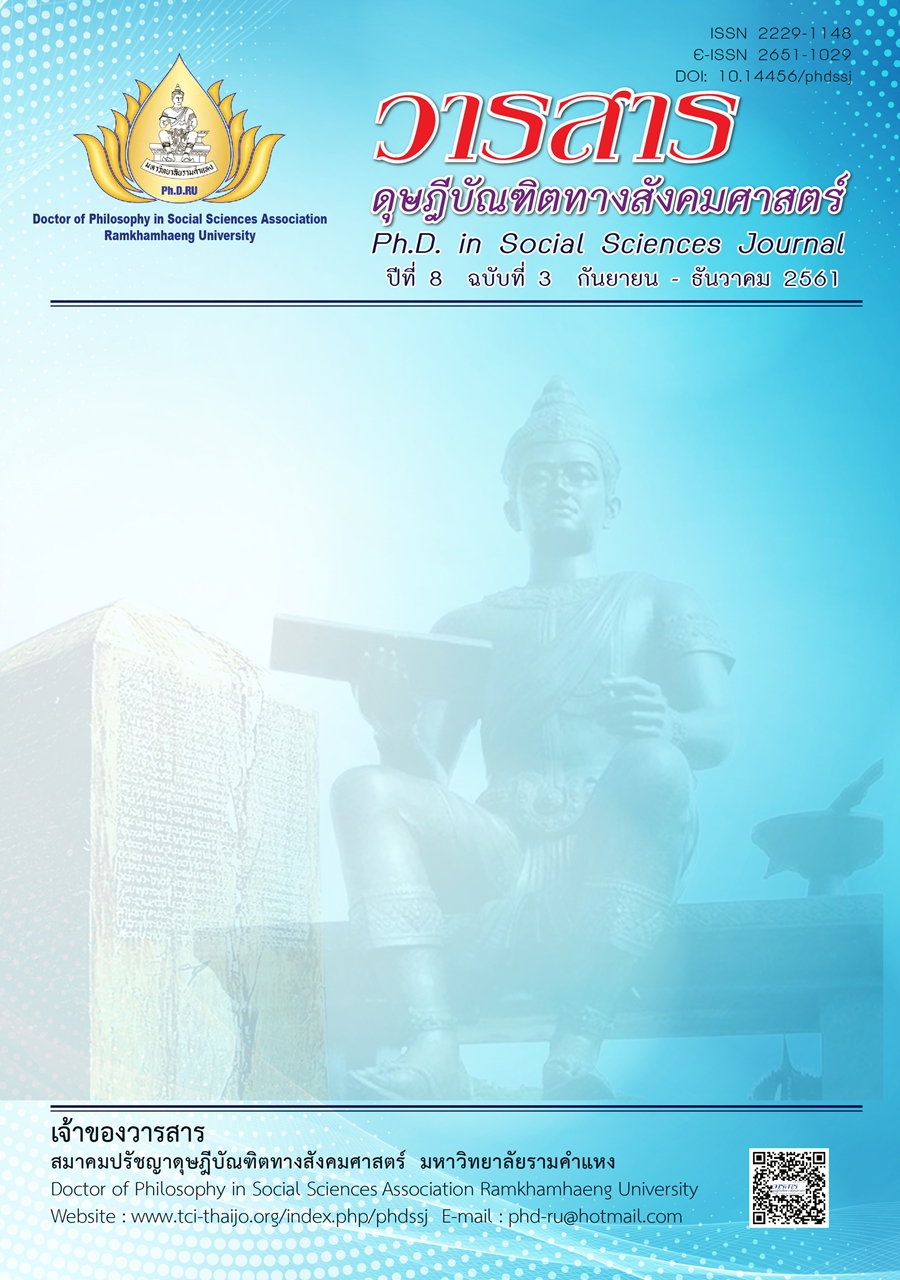The Influence of Thai Nurse Leadership Style on Job Performance with the Mediating Role of Professional Involvement: The Evidence of Bangkok Dusit Medical Service
Main Article Content
Abstract
Due to the gap of previous studies on the operational leadership style and the spiritual care of Thai Nurse Leadership, this study aimed to investigate the effect of Thai Nurse Leadership Style on two dimensions: the relationship commitment and the resource support commitment toward job performance with the professional involvement (peer and self- support as the reflexive second-order factor model) as a mediator. The study conducted by using sample survey of 405 nursing staff of Bangkok Dusit Medical Service Hospital with the research instruments was questionnaires of reliability coefficients were 0.82 to 0.86.
The research found that the means score the overall average of the two dimensions of Thai Nurse Leadership, professional involvement, and job performance were 4.107, 4.161, 4.171 and 4.283 respectively. With the theory driven model-based approach, the causal model was shown that the professional involvement was a complete mediator of the relationship commitment (reflexive to relational and affective commitment) and job performance with statistical high significance. Finally, we found that the dominant characteristic of Thai Operational Leadership Style such Thai Nurse Leadership Style is the capability of relationship commitment management.
Article Details
Academic articles, research articles, and book reviews in the Ph.D. in Social Sciences Journal are author’s opinions, and not the publisher’s, and is not the responsibility of the Ph.D. in Social Sciences Journal Philosophy Association, Ramkhamhaeng University. (In the case that research is done on human, the researcher has to be trained in Ethics for Doing Research on Human Training and has to produce the evidence of the training).
References
Bandura, A. (1997). Self-efficacy: The exercise of control. New York: Freeman.
Burke, S. C., Stagl, K. C., Cameron, K., Goodwin, G. F., Salas, E., & Halpin, S. M. (2006). What type of leadership behaviors are functional in teams? A meta-analysis. The Leadership Quarterly, 17(3), 288-307.
Carmeli, A., Gelbard, R., & Gefen, D. (2010). The importance of innovation leadership in cultivating strategic fit and enhancing firm performance. The Leadership Quarterly, 21(3), 339-349.
Chen, C. C., Wu, J., Yang, S. C., & Tsou, H.-Y. (2008). Importance of diversified leadership roles in improving team effectiveness in a virtual collaboration learning environment. Journal of Educational Technology & Society, 11(1), 304-321.
Danuser, R. J. (2009). Cross-cultural leadership: The interaction of culture, values and leadership style. Stillwater, OK: Oklahoma State University Press.
Duygulu, E., & Ciraklar, N. (2008). Team effectiveness and leadership roles. Retrieved March 31, 2018, from https://mpra.ub.uni-muenchen.de/7245
Fitzgerald, S., & Schutte, N. S. (2010). Increasing transformational leadership through enhancing self-efficacy. Journal of Management Development, 29(5), 495-505.
Hinno, S., Partanen, P., Vehvilainen-Julkunen., K. (2012). Nursing activities, nurse staffing and adverse patient outcomes. Journal of Clinical Nursing, 21(11-12), 1564-1593.
Kramer, A., Bhave, D. P., & Johnson, T. D. (2014). Personality and group performance: The importance of personality composition and work tasks. Personality and Individual Differences, 58, 132-137.
Luthans, F., Others. (2007). Positive psychological capital: Measurement and relationship with performance and satisfaction. Personnel Psychology, 60(3), 541-572.
McLean, J., Biggs, H., Whitehead, I., Pratt, R., & Maxwell, M. (2009). Evaluation of the delivering for mental health peer support worker pilot scheme. Edinburgh: Scottish Government Social Research.
Shonk, J. H. (1982). Working in teams: A practical manual for improving work groups. New York: AMACOM.
Woodcock, M. (1989). Team development manual (2nd ed.). Aldershot, England: Gower.
Yukl, G. (2006). Leadership in organizations (6th ed.). Upper Saddle River, NJ: Prentice Hall.
Zhou, J., Shin, S. J., & Cannella, A. A. (2008). Employee self-perceived creativity after mergers and acquisitions: Interactive effects of threat-opportunity perception, access to resources, and support for creativity. Journal of Applied Behavioral Science, 44(4), 397-421.


